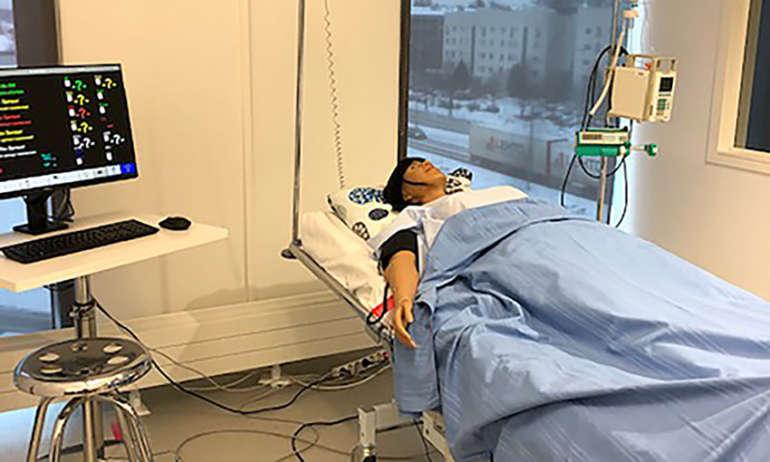Diak’s new simulation class opened

The simulation class is built to fit as authentically as possible the patient site of the hospital.
The space is divided into three parts: lectors’ cockpit, simulation mode, and observers space. Lecturer directs simulation puppet from the cockpit and monitors the execution of the simulation.
Students complete a variety of treatment situations in the simulation class, made as holistic and as authentic as possible. The simulation situation is transmitted to observers through the simulation system. Then a learning discussion will be held among the entire teaching group, and the group will be given feedback of their activity.
— The new class enables simulation instruction to be added as a teaching method and more agile implementation. Simulations have been carried out in the Diak for many years, but to date they have been using simulation facilities located only in Arcada, health lecturer Kristiina Rosqvist notes.
She stresses that since students are accustomed to simulation instruction being in Arcada, it is important to check the reading order for the teaching status booking after the new class opened in Diak’s campus.
— We will primarily use Diak’s own simulation class in the future. But we will also need
the facilities at Arcada, when there is a rush hour for teaching.
Simulation supports multi-professional collaboration
Rosqvist notes that studies suggest simulations have been found to be effective learning methods. Different treatments and client situations can be practiced in a patient-safe environment.
— No one needs to to be nervous in advance of the simulation situation. There are
always student colleagues and lecturers as an aid.
In simulations, students get closer to the correct treatment situation, gaining certainty and
exercise from it whole working with the patient, developing teamwork skills
and performing various treatment activities.
— I also wish all the lecturers would reflect their own implementations and teaching methods and could the things be taught through simulation. The method is suitable for many types for learning styles: visual, auditory and kinetic.
Rosqvist also hopes that the use of multidisciplinary simulations will increase in Diak in the future. Multidisciplinary teaching is important to enabling the students to practice multi-professional collaborations already during their time in college.
— Some of these simulations have already been implemented. The latest was a multidisciplinary remote and large group simulation, with participants from Helsinki, Turku, Oulu, Vietnam and Turkey.
Diak campuses are closed from March 1 to March 28. However, the Skills And Simulation Lessons are still organised at the campus.
